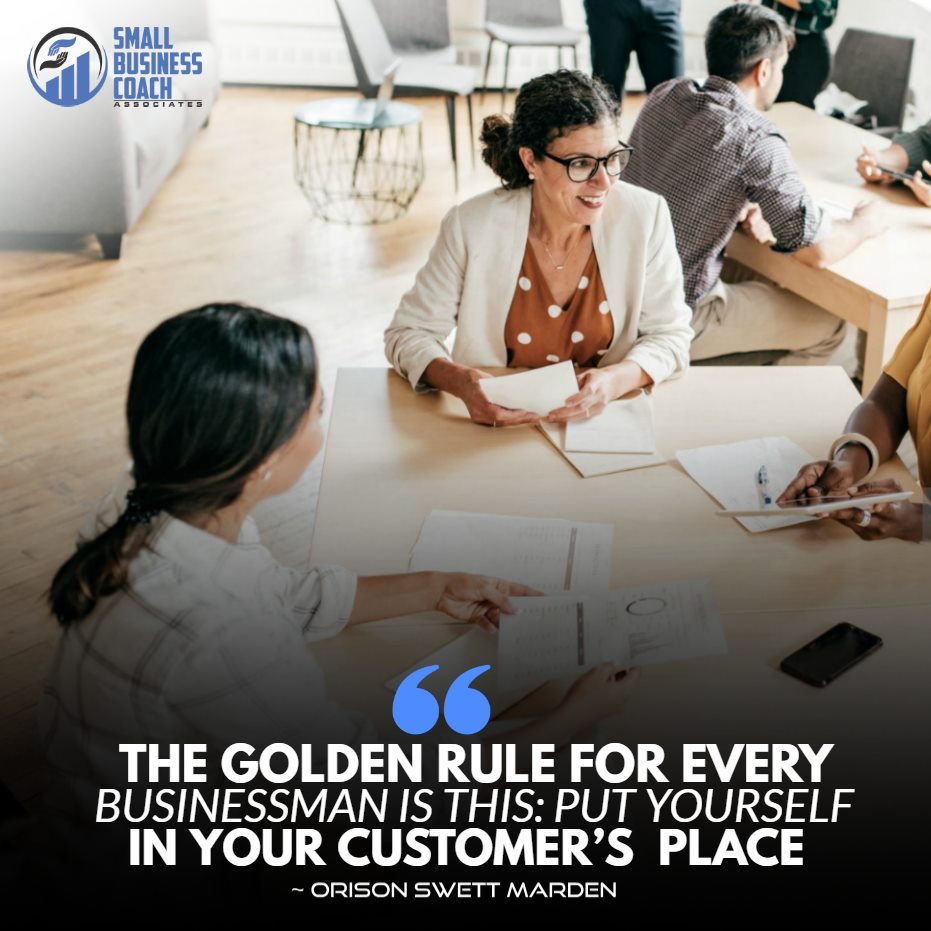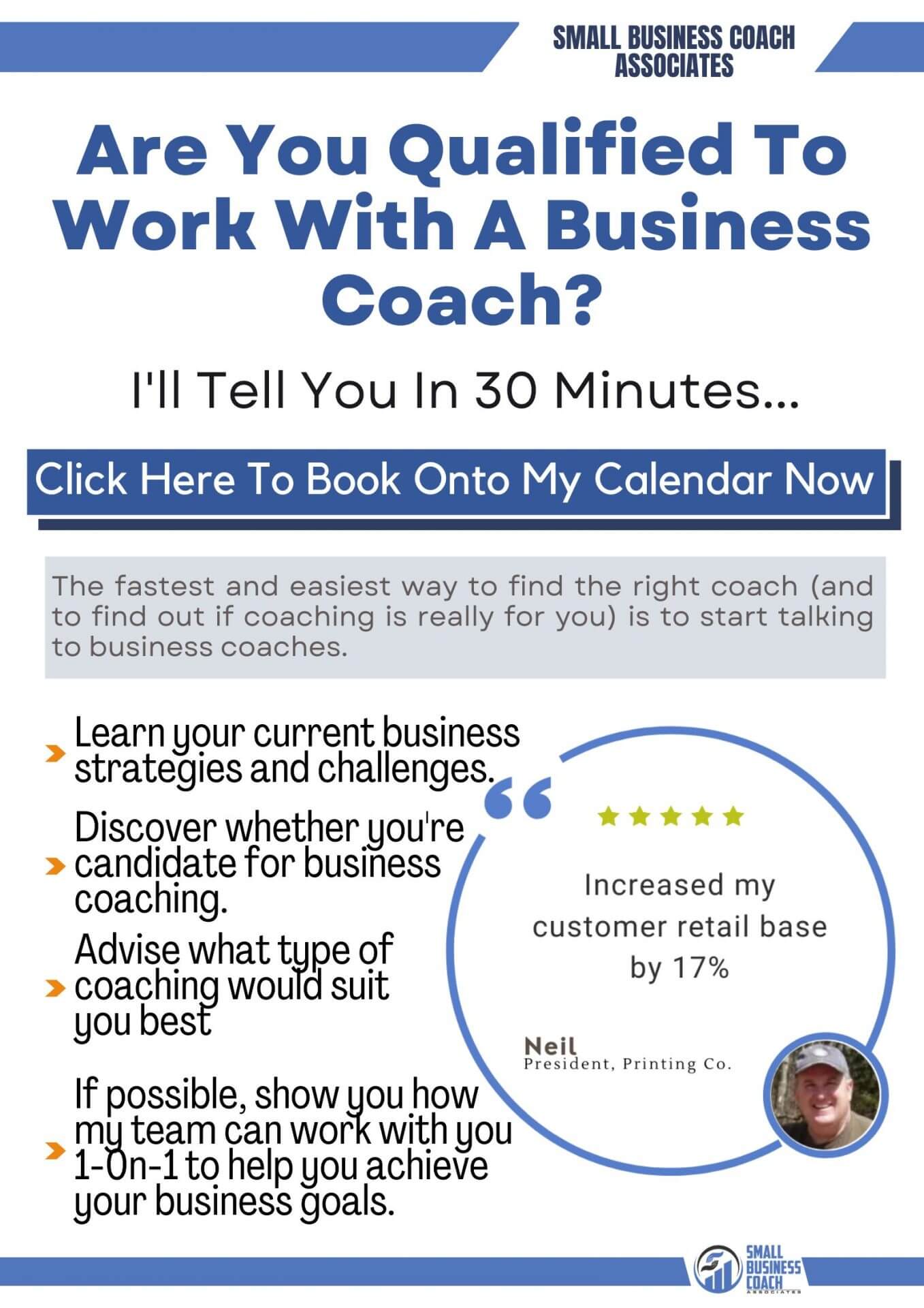VIEW BY TOPIC
- Finding Customers
- Business Systems
- Managing Employees
- Leadership
- Managing Money
Related Posts

Ready to Grow Your Business Fast?
Here’s How I Grew Five Businesses, and Eventually Sold One to a Fortune 500 Company.

What’s Your Unique Selling Proposition in 2023?
Unique Selling Proposition
Why should you have a Unique Selling Proposition? Competition is continually increasing. Even if you are in a local niche business your products and services will eventually become a commodity. Then for consumers the only question is: who has the lowest price?
The good news is that you can command both customer loyalty and higher pricing. How can you do that? With a great Unique Selling Proposition.
Consumers Have Many Choices
Consumers have many choices, and they desire to quickly understand what differentiates one product/service or brand from the other. As a result, developing the correct way to position yourself and your goods/services can mean the difference between standing out and blending in. That’s why the best entrepreneurs use a unique selling proposition (USP) to guide their branding and marketing decisions.
Put in the simplest terms, the Unique Selling Proposition (commonly referred to as USP) is what sets your products and/or services apart from your competitors.
A USP Communicates the Heart of Your Business
Stated as a unique strategy that communicates the heart of your business, the USP serves as the theme of all your marketing endeavors. The question the USP answers for your client is this: “I love to purchase/order/hire from your business, instead of your competition.”

A Unique Selling Proposition or USP is a company’s distinctive “hook” that tells the marketplace what sets them apart from the competition. Your USP defines the reputation and value of your company and allows you to charge higher prices than lower-value commodity products or services. Your Unique Selling Proposition is strategic and long-term, while your tactical marketing plan is short term.
Stop Your Customer from Shopping Around
Research has shown that most people check out 4-5 different businesses before purchasing goods or services. Having a magnetic USP can turn the buyer’s head. Much like curb appeal is to selling a home, a USP is crucial to making a significant first impression that results in a sale.
Your USP should tell the story of how your product or service is different or better than your competitors. It identifies your strongest values or benefits – and drives customers to choose you, not them.
Characteristics of Good and Bad USPs
| * * Best Elements * * | * * Worst Elements * * |
| Contains specific benefits or features | A general statement without detailed information |
| Clear, easy-to-understand, simple | Confusing, vague, jargon, hype (superlatives like “stupendous” or “world-famous”) |
| Unique and distinctive from the competition | Generic, common offer. Using platitudes- “we offer quality.” Your competition is saying the same thing. |
| Short and concise | Rambling; too long |
| Attention-grabbing; exciting | Forgettable |
| Explains how you can solve customer problems | Doesn’t clarify your value in solving customer needs |
| Uses different language than that of company or product names | Repeats wording from your company name or offerings |
| Appealing verbiage | Bland, boring wording |
| Focuses on benefits | Just talks about features |
| Exhibits value, solution, or uniqueness | Is really a mission statement |
| Is based in sincerity and commitment | Says only what they think the customer wants to hear |
The best USP should be truly one-of-a-kind – there’s no point in making a distinction about yourself that’s already being used by competitors. It also should be something that your customers want … and recognize as a benefit. Let’s look at a few examples that spell out the difference between better and poor:
Bad USPs |
Good USPs |
| An email automation business uses the tagline “The ultimate solution.”
It’s a vague claim that says nothing about what makes them different. |
An HVAC company – Their jingle is “There’ll be cool air at your house tonight!” Potential customers immediately get their guarantee that the service will be fast and effective. |
| “Connect your entire workforce with <name of company>.” Focuses on a feature, not a benefit. | WalMart – Has the lowest price. Not a tagline, but this megastore’s unwritten value proposition is undeniable. |
| A software firm declares “We provide systemized technological solutions for query-based operating systems in a Linux environment.” It doesn’t exactly roll off the tongue, nor is it something a customer will remember. Also, avoid “we,” “our,” and “I” as it’s company-centered, not customer-centered. | Avis – “We’re number two, so we try harder.” This promise is so believable.
Fundly – “Raise Money for Anything.” Everybody knows what they do in a second. Listia – “Get rid of old stuff. Get new stuff for free.” And, it gets right to the point. |
| “Serving the entire Southeast.” Well, they do cover some territory, but lacks the details needed to stand out. | LegalShield – “Worry Less. Live More.” Easy to remember and is compelling. Who doesn’t want this promise? |
| A hair salon: “We’re a cut above the rest.” Not what you’d call unique. | Tiffany – Provides the highest quality luxury items. Tiffany’s 180-year reputation is known worldwide. |
So … What’s Your USP?
As you can see, creating a great USP requires some soul-searching, knowledge of what your customers really want, and a bit of writing finesse.

Four Steps for Building a Unique Selling Proposition
- Begin by examining your company offerings from the prospect of the target market, which may be sectioned by factors like gender, age, culture, race, income level, religion, education, and so on. What does your ideal consumer actually want? Does your client station prefer lower prices, loyal customer service, an appropriate location, comfort, home delivery, etc.?
- Challenge yourself with questions such as “what does my goods or service offer that my competitors’ goods or services do not?” Then find out the specific advantages this provides to your consumers. If you can not provide definite answers to these questions in a few simple phrases then you probably might not be doing enough to distinguish your business products/services from your competitors in the marketplace.
- Create a paragraph or two that describes all the unique elements of your business.
- Put all of these together in a single sentence that is remarkable enough to be utilized as an advertising slogan.
You can consider these questions to ferret out your true value proposition:
- What are the aspects of our services or products that make a difference to buyers?
- Who is our target audience/client?
- What are the pain points of our ideal customer?
- What problem(s) are we solving?
- How is your company or offerings different from the competition?
- What do my existing clients say they like about our business or offerings?
- Which are my company’s greatest strengths? Why do we stand out?
- Since your company is a reflection of you, how are you unique?
- What are the concrete, most desirable benefits that you give customers?
- Exactly what are we selling?
- How do we clearly and concisely state our USP?

Creating a USP Where None Exists
If you’re struggling to find your own unique selling proposition, that could signal there’s something missing. Consider adding worth or uniqueness through some of these value-adds:
- Guaranteeing your work. Providing a guarantee is a well-honored way to build trust with clientele. Potential customers see value in a company that will back up their work with a promise to make things right when a customer has a complaint about your product or service.
One distinction – a “guarantee” in this context is a verb; it offers a promise. A “warranty” is a noun; it’s a written contract.
Factors to consider when defining your guarantee:
- Be specific. A promise of “Your satisfaction is guaranteed, or your money back” is too open-ended and open to interpretation. This generalized statement invites abuse by a client and can end with bad feelings all the way around. It could result in a poor rating on Yelp, which can be damaging to your reputation and future business.
- It should address the main frustrations of your target customers. If you’re a hotel, guarantee what you know customers are typically concerned about.
- Make it impressive. Avoid being too humble – make sure they know you firmly and boldly stand behind what you say.
- Ensure you can and will back up your guarantee! If there’s a possibility that fulfilling your guarantee may not be immediate, but that it eventually will be done, then let customers know that.
- Empower your employees to immediately honor your guarantee. Then back your employees’ decision without fail.
A Ritz-Carlton hotel was the largest client in one of my past businesses. This world-class hotel chain did not want any of their clients to walk away disgruntled because of an incident, regardless of fault. Their policy was for any employee who became aware of a problem instantly became “the owner” of the problem. Every employee was required to immediately pacify the customer with up to $2,000 worth of room upgrades, meals, concierge services, etc. without management approval! This kind of guarantee was one of the practices that made the Ritz Carlton world-class.
- Developing a distinctive brand. Your logo, colors, fonts, and graphics can say a lot about you and draw in customers while indicating your unique selling proposition. A compelling visual identity can instantly tell a prospect who you are, what you do, and how well you do it.
Companies who do branding right:
- Dropbox. A vibrant color palette with an emphasis on imagery tells the story of their creativity and services.
- Wells Fargo. A bank that builds familiarity and subtle sophistication with its consistent use of that cherry red font and horse-drawn stagecoach. Their slogan “Together, we can go far” is splendid. What other bank trademarks can you recall?

- Parkinson’s Foundation. A logo that resembles a brain inside a head clues everyone immediately on its research around the neurological disorder. They use a bright blue that suggests hope and vibrancy.
Branding may require that you engage with a company that specializes in this field, but it can have a worthwhile return.
- Brainstorm Your Unique Values. Gather a few team members and have a session to drive out your USP(s). Think about who your perfect customer is, what they really want, and what motivates them to buy from you.
Following are some examples of strengths, benefits, and differentiating qualities that could be the basis for your USP:
- Lowest Cost
- Fastest delivery
- Highest quality
- Always in stock
- Dependability
- Guarantees
- Speed to market
- Open 24/7
- Craftsmanship
- Unique design features
- Unparalleled service
- American-made
- Handmade
- Product durability
- Selling style, glamour, or prestige
Draft Five USP’s
While all these ideas and considerations may seem obvious, the truth is that it isn’t easy to come up with that one magic USP. Don’t limit yourself to just one USP; set out to draft at least five.
If your business is in a mature industry or niche, you may have a hard time figuring out what hasn’t already been said or done. Just take a look at your business from different perspectives, or ask someone outside of your business to look at it with fresh eyes.
As soon as you decide on a strong USP, make sure that everyone knows about it. Include it in every ad, message, email, social media post, and landing page. Put it on your business card, flyers, postcards, and brochures. List it on banners and signage. Instruct your entire team to use your USP to compel customers to choose your services and products over your competitors.
Testing Your Unique Selling Proposition

If you’re undecided on which is the best of your draft USPs, then try these ideas:
- Create a landing page for each USP, then wait a bit to see which has the highest activity rate.
- Set up a simple contest with your customers – post a numbered list of your proposed USPs. Have them write down their choice on their business card, which is put in a fishbowl. Hold a drawing after a week or a month, offering them a discount or prize.
- At your next networking event (or two or three), show a print of your potential USPs to a few attendees and have them pick a favorite. You can thank them for their opinion with a lollipop, pen, or other small giveaways.
- Post your USP on Survey Monkey, Facebook, or other forum and wait for the feedback. Don’t be discouraged at the negative comments – unfortunately, it’s the price everyone pays in the incognito world of the internet.
- Email your employees to request their two cents … and ask them to weigh in with some of their USP suggestions (they might come up with a gem)!
Summary
However you find and define your unique selling proposition, it’s not just about getting more customers in the door. It’s a sure thing that you’ll learn a lot more … about your company’s purpose, direction, products, and services … about your existing and potential clients … and about building a business that has value, character, and long-lasting appeal.















